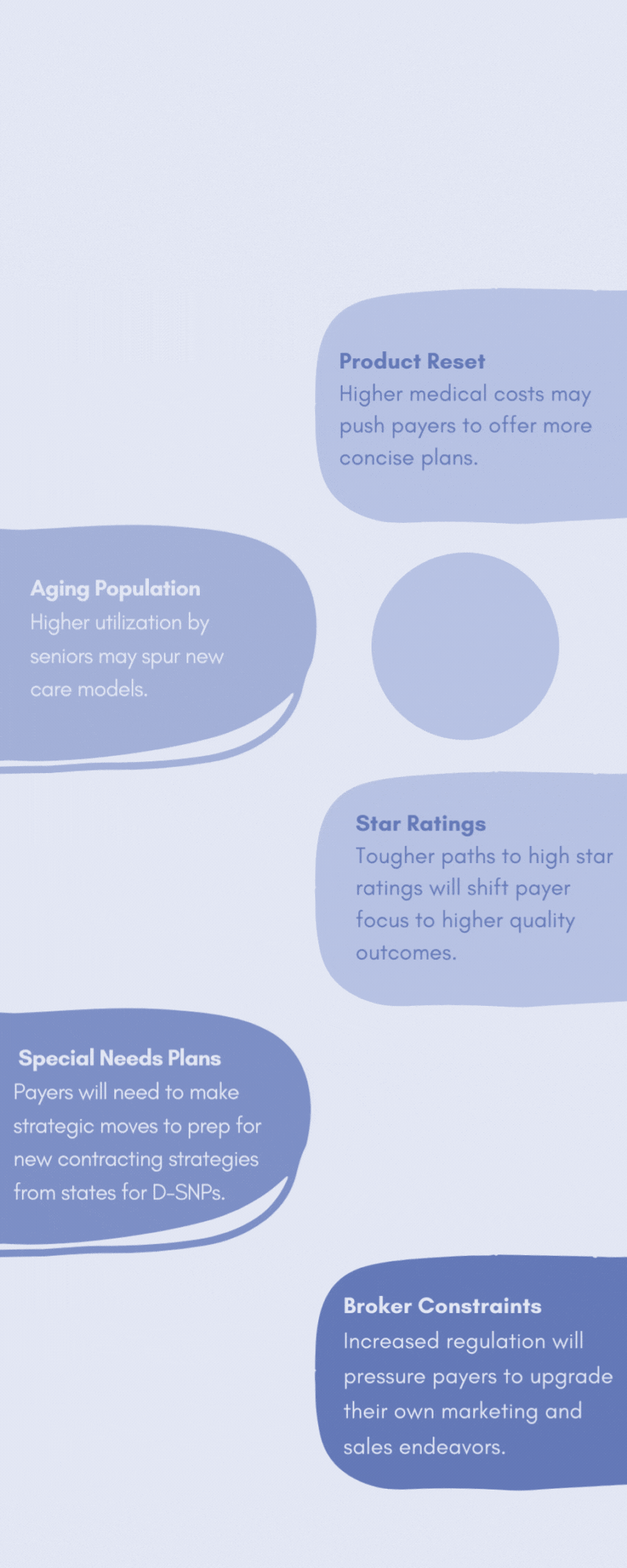A McKinsey & Company report zooms in on the five trends set to shape Medicare Advantage.
Medicare Advantage has seen a lot of turbulence over the last six months. With high utilization and government intervention, among other factors, Medicare Advantage may not be as profitable for payers as it used to be.
Let’s look at the five main factors that are molding Medicare Advantage from an analysis from McKinsey & Company.
Product Reset: Medical costs are rising and payers are feeling the heat. As this continues payers may become more choosy about how many plans and benefits they offer. Regulators are also reconsidering the value of supplemental benefits for consumers. These factors may push payers to create more customized plans that offer a “concise narrative” and don’t try to cater to everyone by casting a wide net.
Aging Population: Some of the biggest upticks in medical costs that payers are seeing are procedures used by the aging population, particularly knee and hip replacements. Between this and the ongoing healthcare worker shortage, new care models will have to come into play. McKinsey analysts pose the question of vertical integration for payers as they see an influx of patients with higher needs.
Star Ratings: As CMS toughens the threshold for higher star ratings, payers will need to shift their focus to higher quality outcomes as beneficiary satisfaction ratings become deemphasized.
Opportunities In Special Needs Plans: Special needs plans, especially dual-eligible special needs plans are growth opportunities. However, payers will need to make strategic moves to prep for new contracting strategies from states for D-SNPs.
Broker Constraints: With increased regulation around third-party marketing and broker organizations, McKinsey analysts suggest that payers may need to upgrade their own marketing and sales endeavors.

Marie DeFreitas is the finance editor for HealthLeaders.
